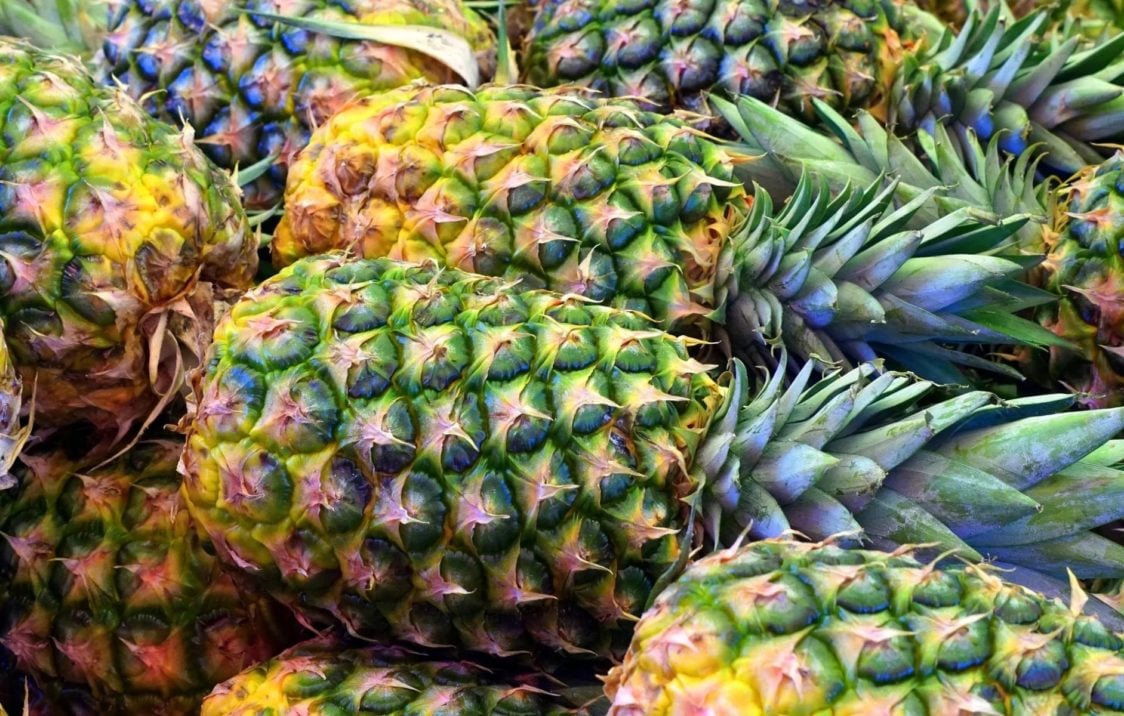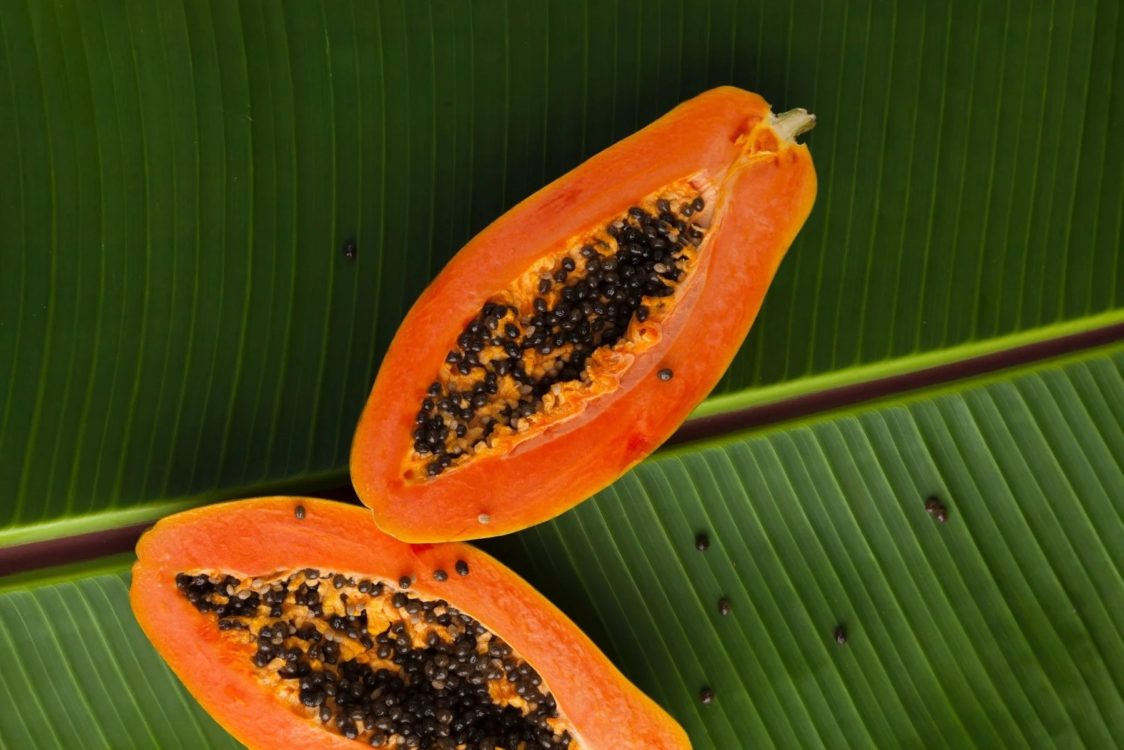Table of Contents
Enzymes in the body act as “accelerators” of chemical reactions, providing several processes, including the digestion of food. Get to know the types of enzymes, their place of action, place of origin and function. The body creates them naturally, but we can also take them in the diet or in the form of supplements. Learn about amylase, lipase and protease and their importance for proper digestion.
What is an enzyme?

Enzymes are an important component of the human body because they serve several functions in the body. The biological term enzyme was introduced by the German physiologist Wilhelm Kühne in 1878. It was based on modern Greek and the word enzyme, which can be loosely translated as “yeast”(leavened). [1–4]
Enzymes are protein molecules that increase the rate (catalyze) of chemical reactions in the body. In some cases, they can “accelerate” a response up to 1,000,000 times faster. [1–4]
They are important for the functioning of digestion, metabolism, but also the replication of human DNA or the removal of toxins from the body. [1–4]
One of the most well-known functions of proteins in the body is the growth and maintenance of muscle mass, but also the mentioned enzymatic function is one of the basic roles of proteins in the human body. [1–4]
Chemical reactions are constantly occurring in the human body, and human cells contain thousands of enzymes. Human RNA can accelerate certain reactions in the body, but most biological reactions are catalyzed by enzymes. [1–4]
How enzymes work?
The human body naturally produces enzymes and their function depends on their specific shape. Enzymes accelerate reactions, but they are highly selective catalysts. This means that each of the enzymes only accelerates a specific reaction. Some of them break down molecules into smaller pieces for better absorption in the human body. Others are involved in joining molecules, helping to create new molecules. As already mentioned, the function of an enzyme is related to its shape. By changing the structure of the enzyme, the enzyme may stop working, which may be caused by, for example, disease, heat or harsh chemical conditions. [2] [5]
Enzymes bind in part to molecules called substrates. The connection between the substrate and the enzyme can be compared to the fitting of two parts of a jigsaw puzzle. The binding occurs due to the active site of the enzyme because it has a unique geometric shape identical to the substrate molecule. As a result, a product is formed from the substrate, and when it leaves the active site, the enzyme continues to act and attaches to the next substrate. [3] [6]
You might be interested in these products:
The mechanisms of enzyme function are explained using Lock and Key Theory and Induced Fit Theory [3] [6]:
Lock and Key Theory – the theory, developed by Emil Fischer in 1894, defines the combination of enzyme and substrate by comparing them to a key and a lock. According to the theory, the enzyme is in the lock position and the substrate is the key that fits into the active part of the enzyme. The comparison with a key also means that keys of larger or smaller dimensions, possibly with a different arrangement of “teeth”, do not fit correctly to the active part of the enzyme.
Induced Fit Theory – the theory of keys and locks, unfortunately, does not clarify all the experimental evidence, and therefore another theory has been proposed. According to her, the enzyme is partially flexible and the substrate has a key role in determining the final shape. The theory explains why some molecules may be attached to an enzyme, but no reaction occurs. Some compounds are attached but the reaction does not occur because the enzyme is too deformed or other molecules are too small for proper alignment. Simply put, the active part of the enzyme changes shape when it hits the substrate, and catalysis does not begin until it is in the correct position and “locked.”

Digestive enzymes
Digestive enzymes are important for human digestion, they accelerate chemical reactions in the breakdown of food into components that the body can absorb. Enzymes are found in specific parts of the digestive tract and can be divided according to which nutrients they help digest. [7]
Amylase
Amylase is an enzyme that breaks down carbohydrates and starch into sugars in the body. The human body produces amylase in the pancreas, small intestine and salivary glands. The digestion of carbohydrates, more precisely starch, begins in the oral cavity due to a type of amylase called ptyalin, which is formed in the salivary glands. When eaten, food mixes with saliva and thus begins its work. The partially digested starch enters the stomach, where the amylase is neutralized by gastric acid. The starch enters the small intestine and the pancreas secretes enzymes that completely break it down in the intestine. At the end of the whole process is glucose, which enters the bloodstream. Amylase in the oral cavity is only a small part of the total amylase and it is not clear why it actually exists. [5] [8] [9]

Protease
Protease is a group of enzymes that accelerate the chemical reactions associated with the digestion of proteins in the body and are produced in the pancreas, stomach and small intestine. In addition to digesting proteins and breaking them down into amino acids, the protease is important in other processes, such as promoting immunity, cell division, blood clotting, or recycling proteins. The protease is useful for the absorption of essential amino acids and can be helpful for people with digestive problems. Among other things, according to a 2009 study, a mixture of protease enzymes reduced pain and muscle sensitivity after training better than placebo. [5] [10]
Proteolytic enzymes include, for example, pepsin, trypsin or chymotrypsin, but up to 600 protease genes have been discovered in the human genome. The three enzymes are produced by the body in the digestive tract, but they can also be obtained from certain foods and in the form of nutritional supplements. The best sources of proteolytic enzymes are pineapple (bromelain) and papaya (papain), other sources of enzymes include asparagus, kiwi, ginger or sauerkraut. If you do not have access to papaya and pineapple, the practical and affordable form is bromelain and papain in the form of a supplement. [11] [12]

Lipase
Lipase helps break down fats (triglycerides) into glycerol and fatty acids, and is formed in the body in the pancreas and small intestine. The group of lipase enzymes includes several types of enzymes, for example liver lipases, pancreatic lipase, lipoprotein lipase or hormone sensitive lipases. [5] [13]
However, the breakdown of fat and the subsequent absorption of smaller parts is not just about lipase, bile also plays an important role in this process. When dietary fat enters the small intestine, the gallbladder begins to secrete bile to help break down fats into smaller molecules that lipase can handle. Significantly increased consumption of fats is not actually healthy, but their reduced intake can also cause problems. Therefore, if your diet is very low in fat, you may develop gallbladder problems because bile will remain in it. [14]
For a better overview, we present a table with the main enzymes that digest proteins, carbohydrates and fats [15]:
| Protein | Pepsin | Gastric glands | Stomach |
| Peptidase | Small intestine | Small intestine | |
| Trypsin | Pancreas | Small intestine | |
| Cabrohydrates | Maltase | Small intestine | Small intestine |
| Salivary amylase | Salivary glands | Mouth | |
| Fats | Lipase | Pancreas | Small intestine |
Foods containing digestive enzymes
The human body creates digestive systems, thanks to which it subsequently accelerates reactions when digesting food. Natural digestive enzymes are also found in some foods and their consumption can support human digestion. We will introduce you to at least some of the foods whose content is beneficial for the digestion of proteins, fats or carbohydrates. [16]
Kefir
Kefir is known mainly as a great probiotic, thanks to which we have a good intestinal microflora. It is a fermented milk drink with the consistency of thinner yogurt, which is produced by adding kefir cultures to milk. If you are a fan of kefir, you will be pleased to know that there are several enzymes in it – lactase, lipase and protease. Therefore, by consuming kefir, you not only restore the bacterial environment in the digestive tract, but also support the digestion of lactose, fats and proteins. [16] [18]
Pineapple
As already mentioned, pineapple contains a group of enzymes called bromelain, which are proteases that help digest proteins. A 2012 study points to the therapeutic benefits of bromelain in several areas. It is useful, for example, in the treatment of bronchitis, angina pectoris, alleviates diarrhea, osteoarthritis or certain cardiovascular diseases, but also improves the absorption of drugs, especially antibiotics. [16] [17]

Banana
Banana is not only a source of carbohydrates that you can supplement after training, it also contains the enzymes amylase, maltase and glucosidase, beneficial for the digestion of carbohydrates. Have you ever wondered why ripe bananas are sweeter than less ripe ones? Enzymes are to blame, as they break down starch into sugars as bananas ripen. [16] [18]
Papaya
Papaya and pineapple have a common benefit for people who need to digest proteins better. Like pineapple, papaya contains a protease – papain. If you are interested in supporting the digestion of proteins, be sure to reach for papaya, but rather for less ripening. The amount of papain in the fruit decreases as the papaya ripens. Papain is used to make medicines and help with several ailments, such as pain and swelling, sore throat and pharynx, psoriasis, hay fever or persistent diarrhea. [18] [19]

Sauerkraut
Not only kefir but also sauerkraut are among the fermented products that support optimal digestion. Sauerkraut is one of the oldest and most common ways of preserving cabbage, and is a source of vitamins, minerals, lactic acid and tyramines. However, it is also a source of digestive enzymes, but if you want to increase their content, eat raw and unpasteurized sauerkraut, because temperatures deactivate the enzymes. [16] [18] [20]
In addition to the five foods mentioned, there are other enzyme-rich sources, such as kiwi, avocado, apricot, honey or ginger. Digestive enzymes are practically supplemented in the form of suplements, which may contain a complex of several enzymes. [16] [18]
Enzyme supplementation
Insufficient production of enzymes
Enzymes support the digestive process and their deficiency can therefore be manifested by stomach upset, flatulence or diarrhea. Exocrine pancreatic insufficiency (EPI) or lactose intolerance may occur due to insufficient enzyme production. [7]
Exocrine pancreatic insufficiency occurs when the pancreas is damaged by another disease. Symptoms of EPI include diarrhea, bloating, excessive flatulence, weight loss, or greasy and foul-smelling stools. One of the most common causes of EPI is [7] [21]:
- Chronic pancreatitis – chronic inflammation of the pancreas
- Pancreatic cysts or benign tumors
- Pancreatic cancer
- Pancreatic surgery
- Cystic fibrosis – a genetic disease affecting the digestive system, lungs and other organs
- Diabetes
In addition to EPI, conditions associated with inability to digest include lactose intolerance. This type of intolerance is due to a lack of the enzyme lactase, which is formed in the small intestine and breaks down lactose. Lactose intolerance can be primary and caused by a gene that is most common in people of African, Asian, or Hispanic descent. Other diseases, such as Crohn’s disease or celiac disease, can also be the reason for the inability to digest lactose. One of the types of intolerance is also congenital and developmental, which is rare and the body does not produce lactase from birth. [7] [21]
Supplements containing digestive enzymes are available in liquid form or in the form of powder or tablets. In case of indigestion, it is always necessary to consult the use of enzymes with your doctor. It is true that enzyme-containing products can reduce digestive problems, but in case of persistent digestive problems similar to EPI, it is definitely advisable to contact your doctor. [7] [21]
Digestive enzymes and safety
Digestive problems can occur in people with an active lifestyle, for example due to increased protein consumption. These can cause indigestion, such as bloating, flatulence or cramps. Most of these problems are associated with lactose intolerance, which is a common disorder in society and can affect up to 75% of the population. In case of problems with the consumption of whey protein, it is not harmful to prefer whey isolate or multicomponent protein with added digestive enzymes. [22]
The safety of digestive enzymes is a common topic, and it should be mentioned that digestive enzymes are safe if you use them as recommended on the packaging. Like other nutritional supplements, they could not be sold otherwise. In addition, many forms of enzymes are over-the-counter, but their price and quality may vary. If you are unsure, it is advisable to consult a batch of enzymes in the products with an expert to make sure you are buying a product of adequate price and quality.
If you are allergic or intolerant to certain foods, it is not a bad idea to check the composition of the supplements and the possible presence of allergens, such as gluten or soy. According to research, it is important to know whether the product has a plant or animal origin, as this can also affect its effect. Studies also show that bromelain interferes with platelets, so people taking blood thinners should limit their bromelain intake to avoid excessive blood thinning. In general, a careful reading of the package leaflet and product packaging will tell you a lot. If you are taking medication, it is advisable to consult your doctor about consuming enzymes. [23]

Proteins are not only a building block for muscle growth, but also serve as “accelerators” of chemical reactions. The human body receives nutrients from foods that it needs to process in the digestive tract so that they can be absorbed and utilized. Digestive enzymes catalyze reactions so that these processes can take place adequately. We believe that the article provided you with the necessary information about the types of digestive enzymes and their sources. Do you want your friends to know about digestive enzymes? Feel free to support the article by sharing.
[1] Geoffrey M Cooper – The Central Role of Enzymes as Biological Catalysts – https://www.ncbi.nlm.nih.gov/books/NBK9921/
[2] Joseph Castro – How Do Enzymes Work? – https://www.livescience.com/45145-how-do-enzymes-work.html
[3] Tim Newman – Enzymes: How they work and what they do – https://www.medicalnewstoday.com/articles/319704
[4] Enzyme (n.) – https://www.etymonline.com/word/enzyme
[5] James Roland – Why Are Enzymes Important? – https://www.healthline.com/health/why-are-enzymes-important
[6] Ms. P. Benitta Christy, S. Kavitha – ROLE OF ENZYMES – http://www.recentscientific.com/sites/default/files/download_50.pdf
[7] What Are Digestive Enzymes? – https://www.webmd.com/diet/what-are-digestive-enzymes#1
[8] Amylase Enzyme: An Essential Digestive Component – https://enzymedica.com/blogs/digest-this/amylase-an-essential-digestive-enzyme
[9] Catherine Peyrot des Gachons, Paul A. S. Breslin Salivary Amylase: Digestion and Metabolic Syndrome – – https://www.ncbi.nlm.nih.gov/pmc/articles/PMC6825871/
[10] What is Protease? – https://enzyscience.com/blogs/news/what-are-protease
[11] Judith S. Bond – Proteases: History, discovery, and roles in health and disease – https://www.jbc.org/content/294/5/1643.full
[12] Jillian Kubala – Proteolytic Enzymes: How They Work, Benefits and Sources – https://www.healthline.com/nutrition/proteolytic-enzymes
[13] Yasaman Pirahanchi; Sandeep Sharma – Biochemistry, Lipase – https://www.ncbi.nlm.nih.gov/books/NBK537346/
[14] What is Lipase? – https://enzymedica.com/blogs/ingredient-science/what-is-lipase
[15] Ben Fuchs – Enzyme Nutrition – https://pharmacistben.com/nutrition/enzyme-nutrition/
[16] Ryan Raman – 12 Foods That Contain Natural Digestive Enzymes – https://www.healthline.com/nutrition/natural-digestive-enzymes
[17] Rajendra Pavan, Sapna Jain, Shraddha, Ajay Kumar – Properties and Therapeutic Application of Bromelain: A Review – https://www.ncbi.nlm.nih.gov/pmc/articles/PMC3529416/
[18] High Enzyme Foods – https://enzymedica.com/blogs/digest-this/high-enzyme-foods
[19] Papain – https://www.rxlist.com/papain/supplements.htm
[20] Christa Raak, Thomas Ostermann, Katja Boehm, Friedrich Molsberger – Regular Consumption of Sauerkraut and Its Effect on Human Health: A Bibliometric Analysis – https://www.ncbi.nlm.nih.gov/pmc/articles/PMC4268643/
[21] Ann Pietrangelo – The Role of Digestive Enzymes in Gastrointestinal Disorders – https://www.healthline.com/health/exocrine-pancreatic-insufficiency/the-role-of-digestive-enzymes-in-gi-disorders
[22] Ryan Raman – Does Too Much Whey Protein Cause Side Effects? – https://www.healthline.com/nutrition/whey-protein-side-effects
[23] Danielle Dresden – Will digestive enzymes help IBS? – https://www.medicalnewstoday.com/articles/320823


Add a comment
You must be logged in to post a comment.